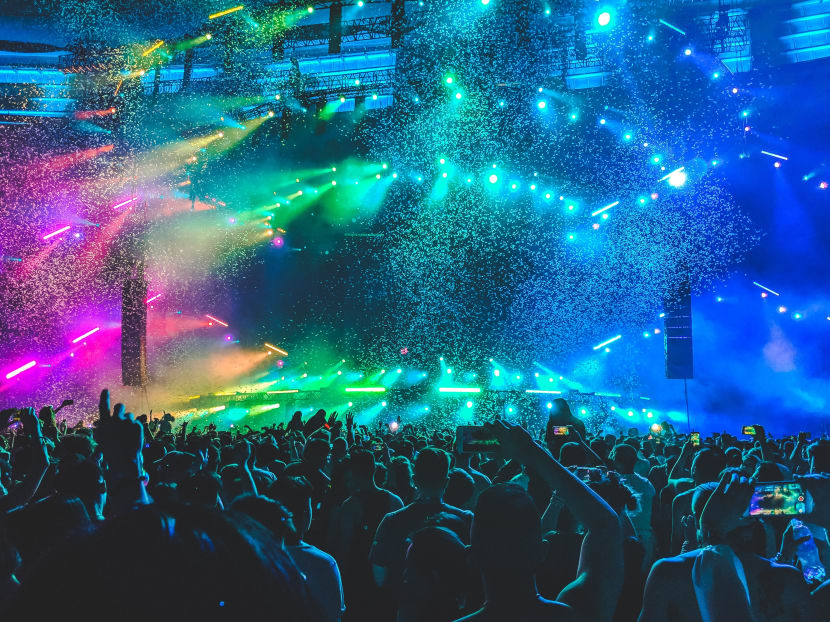Gen Y Speaks: Nightclubs can do more to curb molest cases

Night spots can make it easier for molestation victims to report inappropriate behaviour without fearing that nightclub managers would shrug them off, says the author.
Despite more efforts to prevent sexual assault in nightclubs, the number of molestation cases in these popular entertainment spots in Singapore has been growing.
In just the first half this year, there were 63 molestation cases in nightclubs, a 37 per cent increase from the same period last year, according to mid-year crime statistics released by the Singapore Police Force.
This is a worrying trend, given that the 107 such cases reported in 2017 was already a 33.8 per cent spike over the 80 cases in 2016.
In a bid to tackle the issue, the police, with the support of nightclubs, recently launched a “smart clubbing” campaign to educate patrons on protecting themselves against molestation.
Posters and educational materials have been put up in clubs, and staff have also been trained to identify drunk patrons who might pose a threat to others.
Meanwhile, the police have displayed crime advisories and circulated videos that educate members of the public on how to take precautions against and respond to sexual assault.
However, these measures are not enough. Nightclub owners can do more to protect their customers against non-consensual sexual contact, while patrons have a part to play too.
Nightclubs are designed with intimacy in mind, with cramped spaces and corridors and dim lighting. Patrons are usually required to dress for the occasion before they are granted entry.
These dress codes often encourage sexual attraction, according to nightclub sociologist Yale Fox.
Throw in alcohol consumption, and we can see why they carry a high inherent risk of sexual crimes.
In the United States, 40 per cent of inmates incarcerated for violent offences were under the influence of alcohol during the time of their crime, showed a study by the American National Council of Alcoholism and Drug Independence.
But that is not to say one cannot have fun in nightclubs.
While it is always worth asking ourselves whether it is wise to immerse ourselves in an environment like a nightclub, the key to ensuring safety is to use a good dose of common sense.
This means heading out with trustworthy friends who can look out for our safety and making sure we are not heading in to the clubs with the intention to get drunk, which is a recipe for trouble.
Take for instance the common practice among youth clubbers today of “pre-drinking,” which is consuming alcohol before entering a nightclub at another location that sells a greater variety at a cheaper price – so you can drink even more.
With alcohol already in your system, we become disinhibited even before we start clubbing, making us susceptible to trouble.
In addition, we should not remain silent when we witness incidents of molestation or inappropriate behaviour.
On numerous occasions, I have heard my friends complain about being touched inappropriately, but they were quick to dismiss it.
It sends a message that such behavior is tolerated.
We can do our part by reporting these actions to the police, checking on the victims, and raising awareness of sexual crimes through healthy discourse on social media and other relevant channels.
Keeping quiet will signal to perpetrators that they can get away with their crimes.
Nightclubs also need to take more responsibility by proactively implementing measures, beyond existing ones, to prevent molestation and sexual assault from happening.
They need to take a firm stance against molestation by letting offenders know that they cannot get away with their actions.
For a start, they could make it easier for molestation victims to report inappropriate behaviour without fearing that nightclub managers would shrug them off.
Some American nightclubs have introduced “angel shots”, made popular by a bar in Florida. These shots allow club-goers to seek help efficiently and subtly.
In these nightclubs, “angel shots” can be ordered “neat”, “on the rocks”, or “paired with lime” — different codewords that let bartenders know that the club-goer is in danger.
These codewords are changed regularly to ensure the distress signal is understood only by the patrons and bartenders, who will then call for security to remove the person who is posing a threat to the patron and ensure their safety.
It makes reporting and alerting the authorities of crime a much more subtle and less disruptive process, and can help victims who may otherwise keep their distress to themselves.
Nightclubs could also have more surveillance cameras that are placed in noticeable spots around the venue.
They have to be prominent and highly visible, as these would serve as a deterrent to potential offenders and send a clear message that their actions are being tracked.
The importance of bouncers and floor men being clear about their responsibilities in preventing and tackling molest cases cannot be overstated as well.
Besides adequate training, club managers should ensure they have clear guidelines on how ground floor should deal with such matters.
Clubs have a duty to create a safe culture that does not tolerate molestation or any other forms of assault or inappropriate behaviour.
The safety of patrons must be a top priority, above revenues and the number of people they are able to attract onto the dance floor.
ABOUT THE AUTHOR:
Osmond Chia is a second-year student at the Wee Kim Wee School of Communication and Information at Nanyang Technological University. This is adapted from a piece which first appeared in Nanyang Chronicle, the university newspaper.






